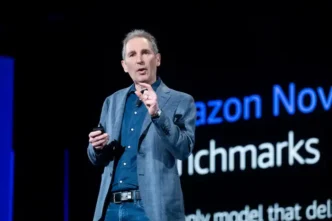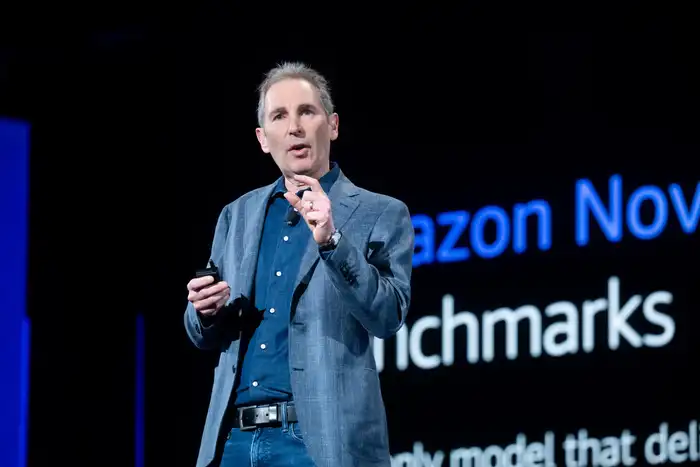Amazon’s AI capacity crunch has become one of the biggest headaches inside AWS this year. What looked like a surge of healthy AI demand ended up pushing several customers toward rivals like Google Cloud, costing Amazon real money and slowing adoption of its flagship AI service, Bedrock.
Bedrock is supposed to be the engine behind Amazon’s AI roadmap. It gives developers access to leading models, including Anthropic’s Claude and Meta’s Llama. But during the summer, the platform hit a wall. Internal documents from July described “critical capacity constraints” so severe that major clients began shifting workloads away from AWS.
The impact was immediate. Epic Games moved a $10 million Fortnite project to Google Cloud after AWS couldn’t supply enough Bedrock quota. Oil trader Vitol also considered moving some workloads because of slow approvals, putting another $3.5 million at risk. Other customers, including Atlassian and GovTech Singapore, were stuck waiting for quota increases that delayed more than $52 million in expected revenue. Internally, the tone was blunt: capacity limits were threatening adoption and causing losses across several industries.
The tension highlights a simple truth in today’s AI market. Demand is exploding, but companies that can’t deliver the required compute capacity will lose deals to faster rivals. That’s why Amazon, Google, and Microsoft are racing to build more data centers, acquire more power, and deploy newer AI chips as quickly as possible. But falling behind, even briefly, opens the door for competitors.
Andy Jassy, Amazon’s CEO, has been open about the urgency. He has stressed that AWS needs more chips and more power to keep up. AWS added over 3.8 gigawatts of power in the last year, more than any other cloud provider, and plans to double that again by 2027. Even with those investments, current and former employees said the capacity crunch remained one of AWS’s top internal concerns through September.
Amazon argues that Bedrock is still growing rapidly and that internal criticism is part of its culture. The company said it reviews customer feedback aggressively, especially when it exposes gaps. Google declined to comment.
But capacity wasn’t the only issue slowing Bedrock’s momentum. Customers using Claude models through AWS also complained about latency and missing features. Several companies, including Figma, Intercom, and Wealthsimple, moved workloads to Anthropic’s own platform or Google Cloud because Bedrock felt slower and less consistent. The UK’s Government Digital Service even weighed shifting to Microsoft after noticing delays running Claude 3.7 Sonnet on AWS.
Thomson Reuters also picked Google Cloud for one of its key AI products after finding Bedrock was 15% to 30% slower and lacked needed compliance certifications. AWS executives later agreed to monthly review meetings with the company to improve performance.
Competition from Google has been especially intense. The July document noted that Google’s Gemini models offered significantly higher quota limits and stronger performance than Bedrock when accessing Claude. Gemini Flash, a cheaper, smaller variant, delivered similar quality at far lower cost, even before the latest Gemini 3 upgrade.
Some startups moved quickly. Financial startup TainAI shifted nearly half of its Claude usage from Bedrock to Gemini Flash, saving about $85,000 per day. Hotel Planner was considering a similar move to Google or OpenAI. These losses added pressure inside AWS, where some teams feared that slow improvements could push more customers to multi-cloud setups or away from Amazon entirely.
The internal document also pointed to a deeper issue: AWS did not yet have a clear, inspiring product vision for AI inference, the part of the AI stack where Bedrock competes. Rivals like Databricks, Nvidia’s Dynamo, and FireworksAI were seen as moving faster, with a more cohesive roadmap. Without a stronger long-term strategy, AWS risked falling behind in one of tech’s biggest markets.
Even with these challenges, demand for Amazon’s AI products remains strong. AWS revenue rose to $33 billion last quarter, and Amazon plans to spend at least $125 billion on capital investments this year. But the capacity woes reveal the other side of the AI boom. When customers want more power than you can supply, every delay becomes an open invitation for competitors.
The AI race is no longer just about innovation. It’s about who can deliver speed, capacity, and performance at scale. And this summer, Amazon learned how costly it can be when you can’t keep up.













